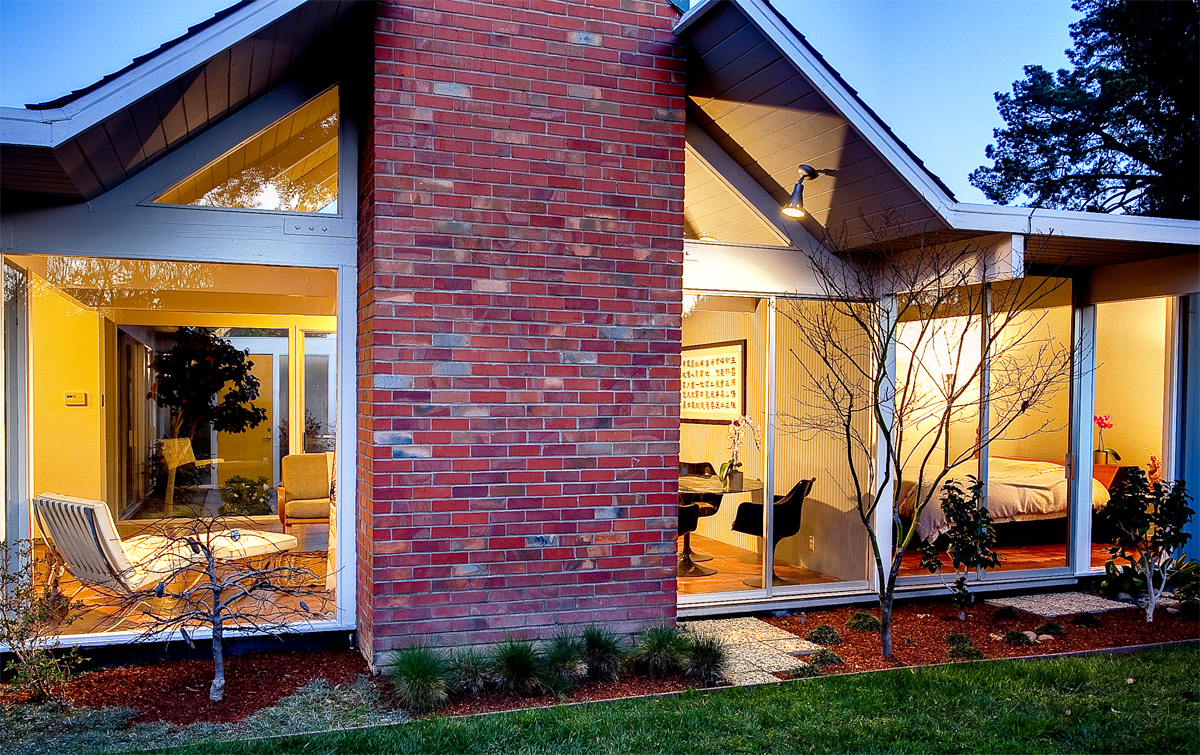House of Questions
 |
|
fit into summer that lies ahead? Modern window films, like the contemporary installation above, have made major strides, and offer heat control, glare reduction, fade protection, privacy, and safety. |
 |
|
|
 |
|
"reduce 99 percent of the UV rays coming through glass," he says. Photo courtesy Crystal Shade Window Tinting |
While the mercury begins edging upwards on the thermometer, there's still time to get our homes ready for summer.
But what to do about your Eichler's hot, oversized west-facing windows? Or that certain window that shines rays of sunlight inside onto a valuable piece of art?
Window film may offer the solution to these problems. Today's products are not our grandma's window film from yesteryear that once cracked or developed a quirky purple hue. In fact, back when Eichlers were young in the 1950s, window tinting was actually applied as a liquid tint. So it's certainly come a long way.
Modern window films have made major strides, and offer heat control, glare reduction, fade protection, privacy, and safety.
For pro insights, we checked with two Bay Area window film experts, Erik Rootness of Crystal Shade Window Tinting in the South Bay and Eric Maldonado of Maldonado Bros. Window Tinting in the East Bay.
Can you discuss the typical uses for window film today?
Rootness: "Solar-control window film can greatly help with heat and light reduction, as well as providing privacy and safety. It can also reduce 99 percent of the UV rays coming through glass."
"Another benefit to applying window film is that the reduction in light can help protect furniture, flooring, and artwork from becoming damaged by fading. Often homeowners don't realize the amount of light that is streaming through their home's windows until they move a piece of furniture or carpeting and finally notice how much the surrounding areas have faded."
Maldonado: "Many homeowners also turn to window film when searching for a more economical alternative than removing windows and replacing glass, as well as for earthquake safety and added security."
"Solar-control film is definitely cheaper than installing dual-pane windows. A lot of Eichler homeowners also request a clear safety film because older, single-pane glass wasn't safety-tempered or up to code."
How well do today's window films perform?
Rootness: "Today's modern shade material and high-tech films are sophisticated, and can even adjust to changing lighting conditions. There are reflective films that are metallized to provide different types of layers and daytime reflection for privacy. One is the mylar, and a ceramic-coated film—there's some nanotechnology in there."
Maldonado: "3M patented the first film in 1966. That film was used into the late 1960s. Today's films can block more than 99 percent of the sun's harmful ultraviolet rays without blocking views, and still allow daylight in. They also reduce solar heat gain, which helps to lower your cooling costs."
"Another thing to remember is that glass itself has changed, not just the film. In the past you could see a drastic change in performance on single pane versus dual pane. Newer glass is designed to hold in heat or reject heat, and film performs differently on different kinds of glass."




